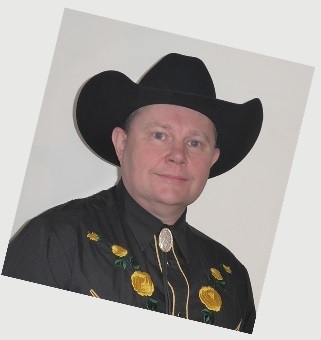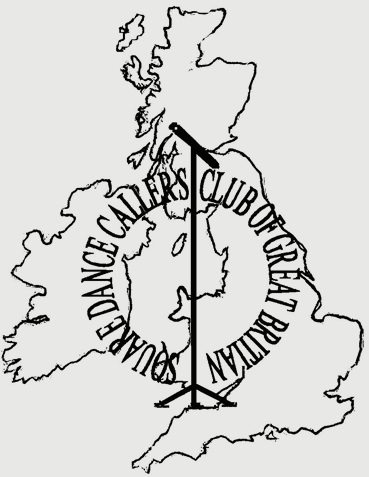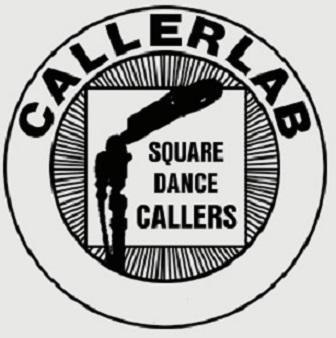

|

|
What is Square Dancing?
Square Dancing has been around since the 17th Century, though what is danced today, and more accurately identified as Modern American Square Dancing is significantly different from it's ancestor, having been standardised and popularised in the USA in the 1960's such that a dancer may now go to a Square Dance anywhere in the world.
As its name suggests, Square Dances starts from a square formation made up of 4 couples (8 dancers) forming a square with each couple forming a side of the square and facing into the middle. However, once the dance begins this square formation is quickly lost and the 8 dancers move around one another to form many different formations: circles, parallel lines, columns, etc. though they will finish each dance back in their original square formation.
Although it is identified as a dance, the movements are low impact with the dancers 'walking' through the moves in time with the beat of the music. That is not to say that it can't be tiring and can certainly help to keep one fit, but much of the excercise is in the mind as much as with the body.
Unlike most dance forms, the dancers don't follow a predefined set of moves to perform the dance, nor do they 'make it up as they go along' or 'do their own thing', but instead execute moves at the direction of the caller who generally stands at the front of the hall, normally on a stage, and constructs the dance for the dancers ensuring constant movement and good body flow to the enjoyment of those dancing. Many think that this only occurs in lessons when the dances are being taught, but this is not the case as a caller also directs the dancers at the dances themselves meaning that the dancers have little idea of which moves they will be doing until the moment that they are asked to execute it - requiring an almost instant response to each instruction.
Each square dance move has a name (e.g. Swing Thru) and is learned by the Square Dancers at their club, which typically meets weekly or every other week (though more intensive courses may also be found). To allow dancers to enjoy social dances as soon as possible, the moves are grouped into different levels: Basic, Mainstream, Plus, Advanced 1 & 2, Challenge 1, 2, 3a, 3b & 4. ALL dancers learn the Basic moves as these form the 'building blocks' for all of the other moves. There are about 50 moves currently identified in the basic program, though these can normally be mastered within a few months by most dancers (and far less for those more dedicated). As its name suggests, most dancers will also learn the moves contained in the Mainstream level. Few learn the full program.
Once a dancer feels comfortable with the knowledge at one level they may opt to find a class teaching the next set of moves, i.e. the next level. It is vital that the dancers retain the knowledge of the earlier moves as these are still called and used at all further levels. A common misconception is that the later levels are seen as higher levels and define a dancer's ability - this is not really the case. The levels more accurately reflect a dancer's interest in the activity and their dedication to learn more dance moves, though they will often be more accomplished dancers at the earlier moves as they will have danced them more often and in more complex and varied situations.
So, experienced square dancers know which level of moves they feel comfortable with and can look for dances to attend which call up to this level. They can attend these dances confident in the knowledge that only the moves that they know will be used by the caller and that they will not be asked to execute a move that they have not learned yet. This is why all square dances identify which level they are dancing, e.g. an announcement/advert may say 'Come to our Valentine's Day Dance, with Kevin Lovell calling Plus'.
Obviously, the more levels you know the more opportunities you have to dance as you can attend any dance up to your current level of knowledge, though often dancers with a knowledge of Advanced or Challenge do not attend Mainstream or Basic dances as the moves are used in their most obvious form which is less exciting for them... As Challenge dancers ourselves, Annika and I often go to Basic and Mainstream dances with friends and still have a great time - a well called Mainstream dance is often more enjoyable than a badly called Advanced dance.
Other Similar Dance Types
As identified on my home page, there are three different types of dance events which are all based on Square Dance moves but which are considerably different in the type of dancer that attends and the dances danced:
- Square Dance.
- Barn Dance.
- Hoedown.
Square Dance
A Square Dance is a dance organised for those that have learned the moves within the Square Dance program.
Each dance will outline the highest level being 'called' and can be attended by Square Dancers that feel confident with the moves up to and including that level.
Square Dances are not attended by those who do not know the moves as little, if any, teaching will take place at the event itself.
Barn Dance
A Barn Dance assumes no previous knowledge of Square Dancing or any other dance form.
A Barn Dance normally includes several traditional dances, but as no prior knowledge is assumed, each dance is taught to the dancers before it is performed, and the dances themselves normally contain 5-10 moves which are repeated througout the dance.
The relative simplicity of the dances and the fact that no prior knowledge is required, makes Barn Dances a real favourite with annual events for companies and sports/social clubs.
Hoedowns
Like with Barn Dances, Hoe Downs assume no previous knowledge of Square Dancing or any other dance form.
As with Barn Dances, at a Hoe Down, the dancers are taught simple Square Dance moves and then these moves are used in the dance itself, though they are not always called in the same sequence and are therefore less predictable to the dancers.
However, a significant difference is that each song may use moves taught in an earlier song, though there is significant repetition as not all dancers dance every time.
As no prior knowledge is requred, these events are becoming very popular for company and sports/social club parties, though they work best where people are likely to dance to many/most of the songs so that the knowledge of moves can be built up over the course of the event and the caller can make the later songs quite varied in the moves being danced.
Chairman and member of:

|
President and member of:

|
A member of

|
A recording artist for:

|
The material contained within this website was created by KnA Services and may not be reproduced in any form without prior written authorisation from them or us.
